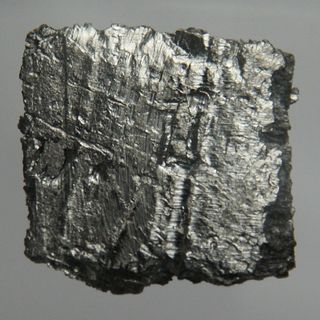Facts About Erbium
Atomic Number: 68 Atomic Symbol: Er Atomic Weight: 167.259 Melting Point: 2,784 F (1,529 C) Boiling Point: 5,194 F) (2,868 C)
Word origin: Named for the Swedish village Ytterby (as was ytterbium, terbium and yttrium). [See Periodic Table of the Elements]
Discovery: In 1842, Swedish chemist Carl Gustaf Mosander separated the "yttria" component found in the mineral gadolinite into three segments that he called yttria, erbia and terbia. As might be expected considering the similarities between their names and properties, scientists soon confused erbia and terbia. Mosander's terbia became known as erbia after 1860, and after 1877, the earlier known erbia was renamed terbia.
Working independently, American chemist Charles James and French chemist Georges Urbain successfully isolated fairly pure erbium oxide (Er2O3) in 1905. In 1934, Wilhelm Klemm and Heinrich Bommer reduced the anhydrous chloride with potassium vapor to produce fairly pure erbium metal.
Properties of erbium
Similar to other lanthanides or rare earth metals, the pure metal is soft and malleable and has a metallic luster that is bright and silvery. Its properties depend to a certain degree on the impurities present. Unlike some other rare earth metals, erbium metal is fairly stable in air and does not oxidize as rapidly as some of the other rare-earth metals.

Naturally occurring erbium is a mixture of six stable isotopes. In addition, nine radioactive isotopes of erbium are recognized. Most of the rare-earth oxides have sharp absorption bands in the visible, ultraviolet, and near infrared. This property, associated with the electronic structure, gives beautiful pastel colors to many of the rare-earth salts.
Sources of erbium
Erbium occurs in a variety of minerals, including gadolinite, euxenite, xenotime, fergusonite, polycrase and blomstrandine.
Uses of erbium
Erbium is finding uses in nuclear and metallurgical applications. When added to vanadium, erbium lowers the hardness and improves pliability of the metal. Erbium oxide adds a pink hue to glasses and porcelain enamel glazes.
Recent production techniques that employ ion-exchange reactions have resulted in significantly lower prices of the rare-earth metals and their compounds, opening more possible applications.
(Source: Los Alamos National Laboratory)
Sign up for the Live Science daily newsletter now
Get the world’s most fascinating discoveries delivered straight to your inbox.

